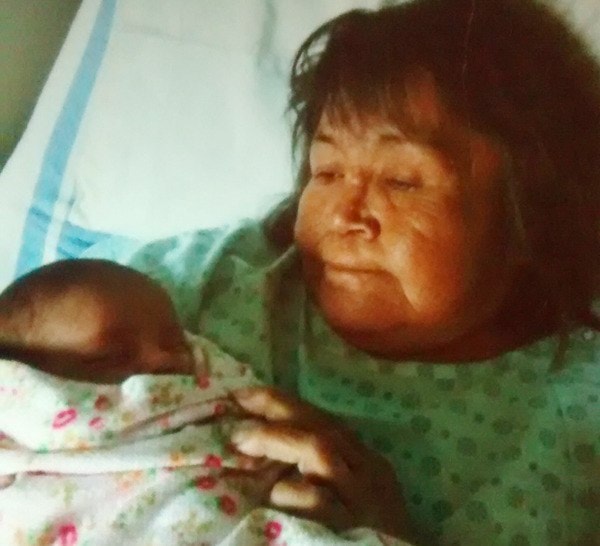By Jesse Wegenast
Marilyn’s life story read like a summary of the Truth and Reconciliation findings. She was taken from her home at a young age and sent to St. Joseph’s Mission residential school, where as a child she lived through a thousand hells. Her sister, last seen hitchhiking in 1977 on the Highway of Tears, numbers among the missing and murdered.
She carried with her all the markings of the legacy of pain that she was born in to: Fetal Alcohol Spectrum Disorder, depression, alcoholism, limited literacy, and intense institutional distrust. Her body wore the scars earned through surviving a half-dozen abusive relationships, dozens of rapes, and thousands of nights living on the street.
Marilyn, 63, was a picture of vulnerability; she ticked all the boxes: homeless, elderly, First Nations, physically disabled, addiction issues, cognitively impaired. But for all this she had a heart as big as the ocean and a smile and warm hug for all those who had the privilege of her friendship.
On Sept. 28, Marilyn made her umpteenth and final trip to Abbotsford Regional Hospital (ARH) via ambulance from her camp in Jubilee Park. She passed away that afternoon. She is missed and mourned by many.
However, as I mourn the loss of a dear friend, I am haunted by the reality that Marilyn’s life need not to have ended in such brisk and brutal fashion.
Consider this: last year, after a three-week admission at ARH, Marilyn was discharged into homelessness. Ten days later Marilyn was brought back to the hospital from a homeless camp with a case of pneumonia. Within hours of arriving in the ER, she was surrounded by a nest of tubes and wires in the ICU on full life support. The infectious pneumonia had entered her bloodstream; she was septic.
She spent the next five or so weeks in the ICU. Then two more in high acuity. She was then sent back to the very unit she had been discharged from two months prior, which promptly once again discharged her to the street.
The approximate cost of an ICU bed in Canada is $2,908 per day. This means that the cost of Marilyn’s ICU stay was about $100,000.
Consider that for a moment: One case of pneumonia, which could have been avoided by providing Marilyn with adequate housing, cost over $100,000! That amount of money could have housed her for the rest of her life!
Marilyn’s story is not unique; it is an amalgamation of the stories of hundreds of people in every city across the province; people who need to be protected, supported and cared for because they are our neighbours, because they can’t support themselves, and because not providing for their basic housing and care needs will continue to put tremendous emotional strains on our communities and financial strain on our institutions.
The cost of ensuring that all Canadians have access to safe and affordable housing is far less than the cost of addressing the symptoms of homelessness.
The provision of affordable housing is a rare case where the compassionate thing and the fiscally responsible thing are the same thing.
Despite this, Canada remains the only country in the G8 without an affordable housing strategy. Consider joining the City of Abbotsford as well as the many individuals and not-for-profits in pressing the federal government for meaningful housing reform. While such a strategy would surely not be a cure-all, it is a first step.
Write a letter, send an email, call your MP. These things matter.
They certainly mattered to Marilyn.
Jesse Wegenast is a pastor with 5 and 2 Ministries, which works with the homeless.
